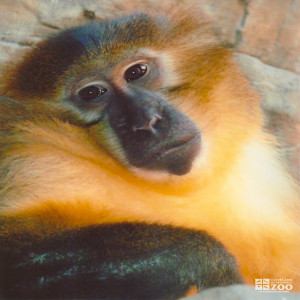Golden-Bellied Mangabey
[Cercocebus chrysogaster]

Golden-bellied mangabeys are medium-sized monkeys and are closely related to the baboons. Their head and body length ranges from 17 to 33 inches. Males weigh up to 22.5 pounds, and females up to 12 pounds. The brownish species, C. galeritus and C. torquatus, are considered to be closely related to each other, and widely separated from the blackish species, C. albigena and C. aterrimus. All have tails longer than their bodies. Females are smaller than males. Their large, strong incisor teeth allow mangabeys to exploit hard seeds which are not accessible to guenons, with which they share habitats. General coloration is a dull yellowish-brown. The hair on top of the head forms a crest, similar to that of the langurs.
Location: Primate & Cat
Share:
Range
The range of the golden-bellied mangabey is Cameroon, Gabon, Kenya and Tanzania.
Habitat
Golden-bellied mangabeys inhabit rain forests.
Conservation Status
EndangeredPrimary Threats
Gestation
Gestation takes about six months.
Litter
Behavior
Mangabeys are terrestrial and live in large groups which include several males. The eastern populations are scattered and separated from the western ones by thousands of kilometers. They are very vocal, and the adult male has a dramatically loud long-distance call, while the adult females of a group also perform loud choruses.
Reproduction
Pregnancy in golden-bellied mangabeys lasts about six months, and there is no evidence of breeding seasonality. Infants are the same color as adults.
Wild Diet
Palm nuts, seeds, leaves
